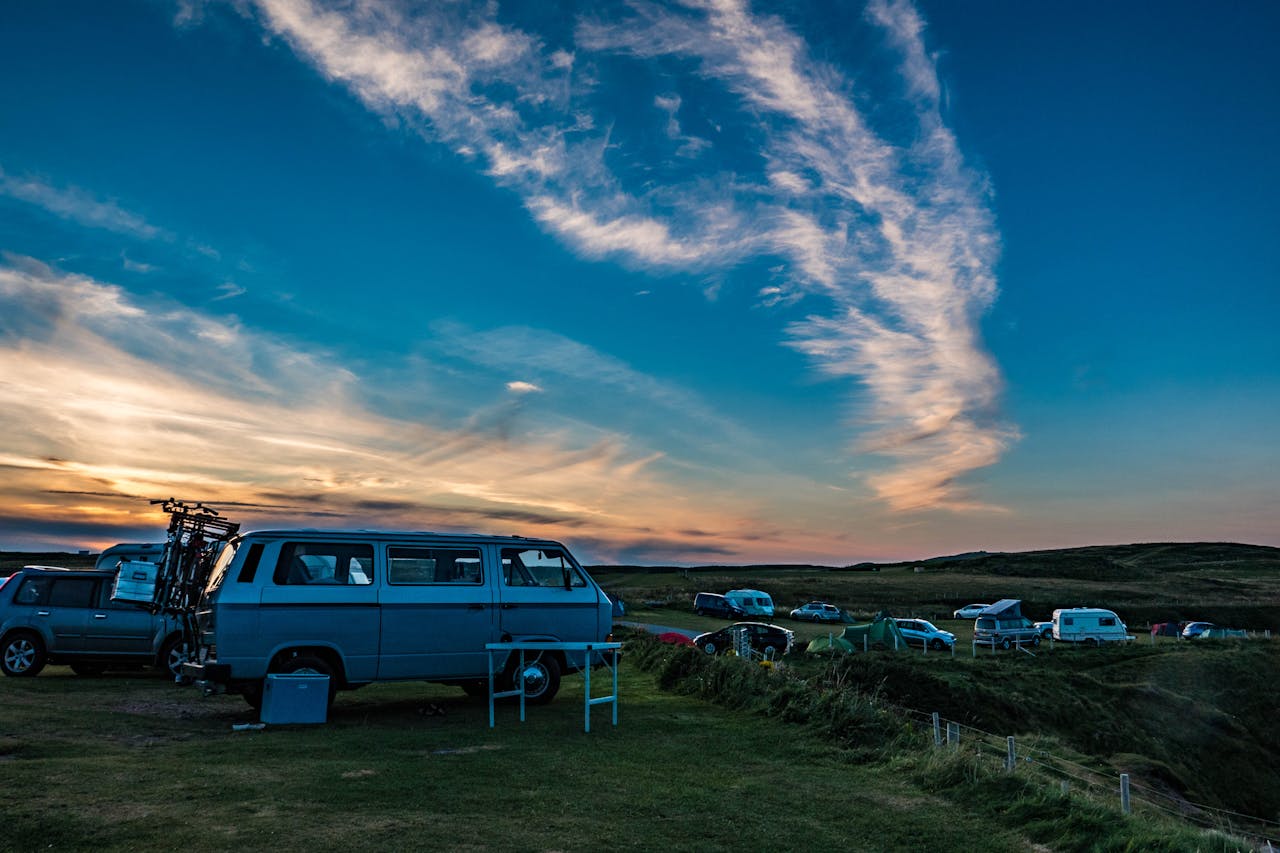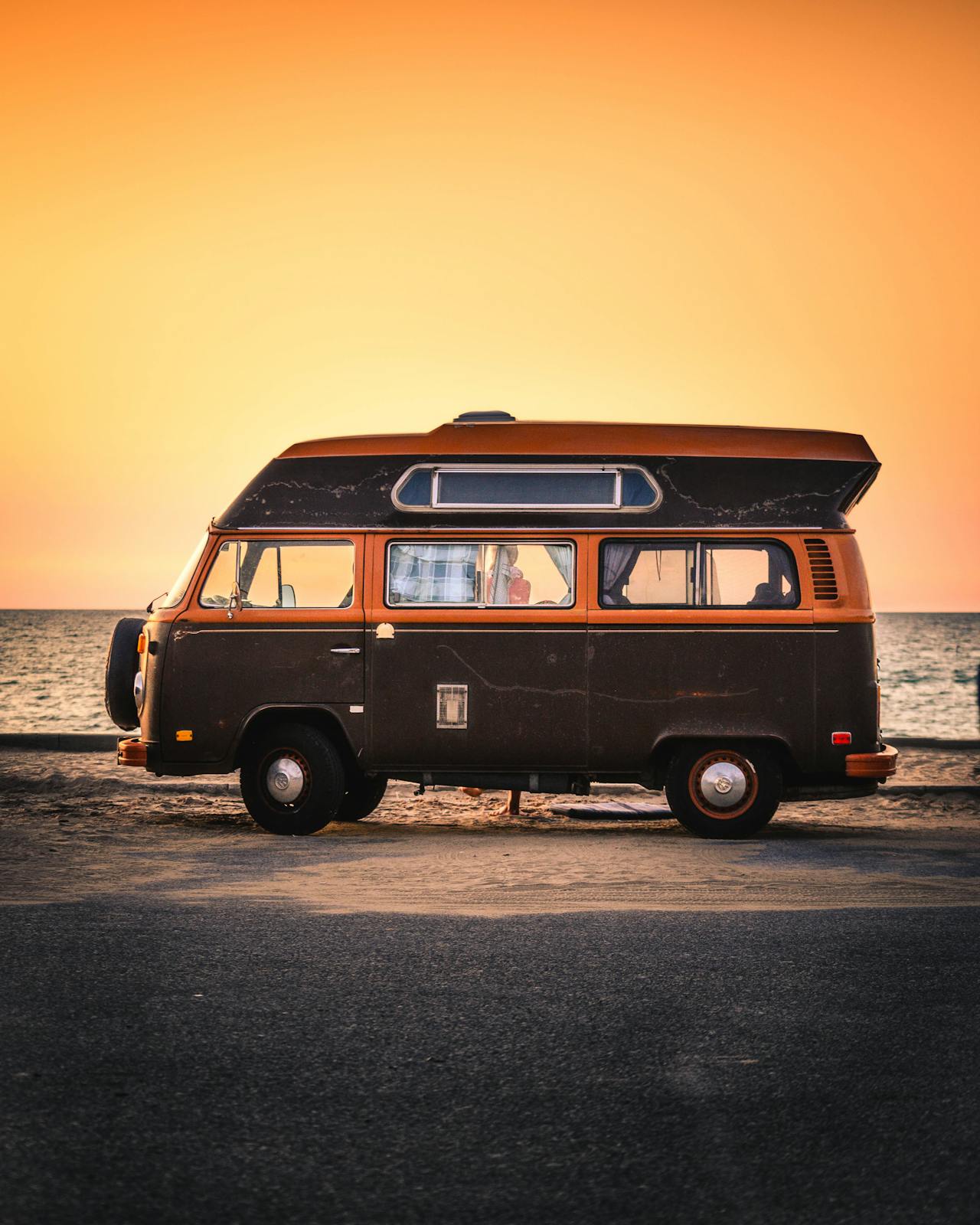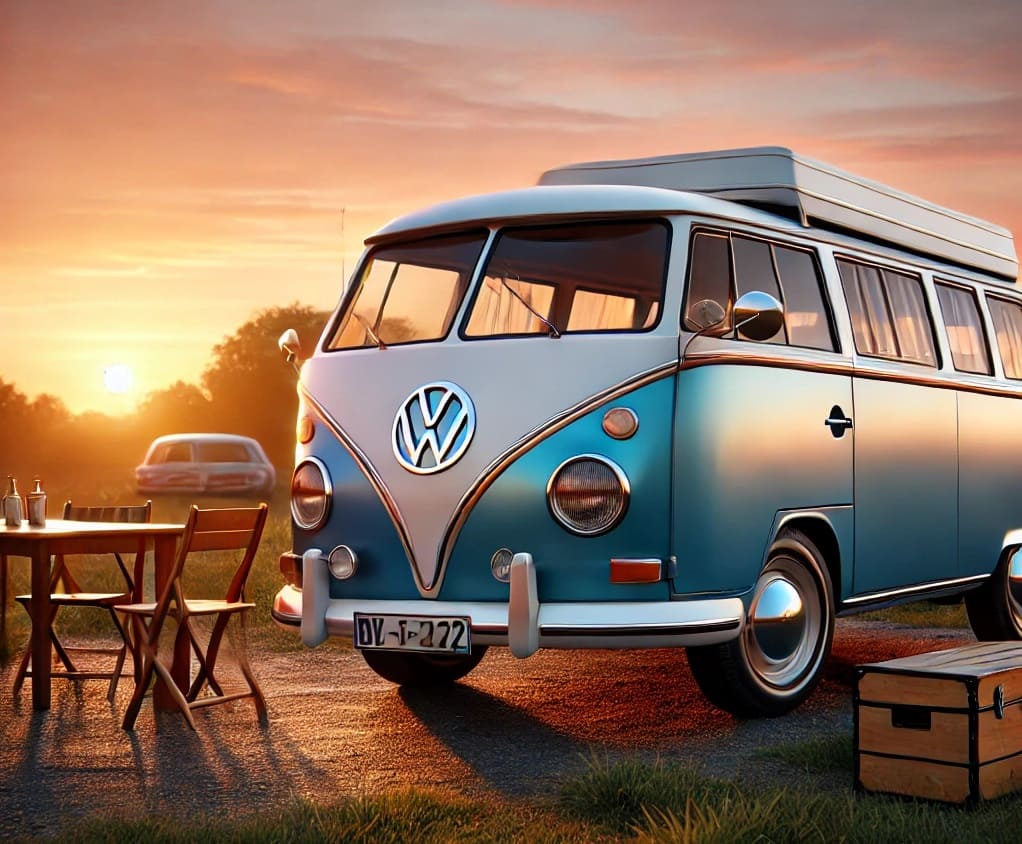The History Of The Campervan
The history of the campervan traces back
To the early 20th century
Rooted in automotive innovation and the growing popularity of camping. Initial conversions in the 1910s provided basic comforts, paving the way for modern designs.
The post-WWII era saw a surge in campervan culture as the middle class embraced leisure travel. This evolution introduced integrated living spaces and advanced technologies, transforming campervans into functional homes. Today, these vehicles symbolise adventure and sustainability, appealing to diverse lifestyles. Their ongoing cultural significance highlights a deep connection to freedom and exploration, opening the door to a fascinating exploration of their enduring impact.
01.
Early Beginnings of Campervans
The inception of campervans can be traced back to the early 20th century, a time marked by innovation in automotive design and the burgeoning desire for recreational travel.
The roots of campervans are intrinsically linked to the rise of motorised vehicles and the increasing popularity of camping as a leisure activity. In the 1910s and 1920s, the first semblances of campervans emerged as individuals began modifying their vehicles for extended trips.


02.
The Golden Age of Road Trips
The rise of the middle class, coupled with the expansion of the interstate highway system, propelled families into their campervans, embarking on vintage journeys filled with exploration and discovery.
After World War II, campervans became much more popular, especially in Europe and the U.S. Soldiers returning from war wanted affordable ways to travel and explore.
It marked a time when campervans evolved into symbols of independence and adventure, embodying the spirit of exploration that continues to resonate with travelers today.
03.
Innovations in Design and Functionality
Throughout the evolution of campervans, innovative design and functionality have played crucial roles in enhancing the travel experience.
Initially, campervans were basic conversions of existing vehicles, focusing on space maximisation and rudimentary amenities such as sleeping areas and small cooking facilities. The initial makeshift arrangements evolved into well-designed vehicles featuring dedicated sleeping areas, foldable beds, and expandable layouts. Features such as solar panels, advanced cooking equipment, and smart storage solutions transformed these vehicles into fully functional homes on wheels, allowing travelers to embrace the spirit of adventure without sacrificing comfort.


04.
The Rise of Modern Campervans
How did modern campervans evolve into the versatile and sophisticated vehicles we see today? The rise of modern campervans reflects a dynamic blend of technological advancements, societal shifts, and evolving consumer desires. The introduction of features such as compact kitchens, foldable beds, and advanced electrical systems significantly enhanced comfort and usability.
This evolution not only embodies the history of the campervan but also signifies a broader cultural shift towards valuing experiences over possessions, encouraging a lifestyle of freedom and exploration.
05.
Cultural Impact and Popularity
The campervan phenomenon has transcended its status as merely a mode of transportation, evolving into a cultural icon that represents freedom, adventure, and a break from conventional living. The history of the campervan illustrates a profound connection between mobility and lifestyle, as it has become synonymous with exploration and a desire to escape the confines of urban life.
The Iconic VW Camper became a symbol of freedom, adventure, and an alternative lifestyle during the 1960’s and 70’s. It was widely used for road trips, festivals (like Woodstock in 1969), and communal living. Its affordability and practicality made it ideal for young people rejecting conventional living.
Today, the campervan continues to inspire a diverse range of adventurers, from weekend warriors to digital nomads, reinforcing its status as a beloved symbol of independence and exploration.

Frequently Asked Questions
The campervan stands as a modern-day chariot, symbolising humanity’s relentless quest for freedom and adventure amidst the confines of daily life. Its evolution from rudimentary shelters on wheels to sophisticated mobile abodes, mirrors societal shifts towards exploration and self-sufficiency. As roads wind through diverse landscapes, the campervan continues to serve as a vessel of nostalgia, embodying the spirit of journeying into the unknown. Thus, the legacy of the campervan remains a testament to the enduring allure of the open road.
What Are the Most Popular Campervan Brands Today?
Today’s popular campervan brands include Volkswagen, renowned for its history and iconic models; Ford, offering versatile options; Mercedes, known for luxury and advantages; Toyota, emphasizing reliability; and Ram, featuring robust designs and functional attributes for adventurous travelers.
How Much Does a Typical Campervan Cost?
While one might assume that freedom comes cheap, typical campervan costs encompass budget considerations, financing options, insurance costs, and resale value, with rental prices offering a tempting alternative for those hesitant to commit long-term. The best way to ensure that campervan life is right for you before you decide to buy is to try renting a campervan initially and taking a trip or two first.
Can I Convert a Regular Van Into a Campervan?
Yes, you can convert a regular van into a campervan through thoughtful van conversion. Focus on campervan design, interior layout, and effective van insulation to create a functional, comfortable space that enhances your sense of freedom.
What Are Essential Features in a Campervan?
In the quest for liberation on the open road, essential amenities encompass efficient storage solutions, comfortable sleeping arrangements, functional cooking facilities, and reliable sanitation systems, ensuring seamless adventures while embracing the spirit of exploration and independence.
How Do I Maintain a Campervan Properly?
To maintain a campervan properly, conduct routine inspections, monitor fluid levels, ensure tire maintenance, check electrical systems, and perform interior cleaning. These practices enhance safety, longevity, and the freedom to explore diverse landscapes effortlessly.